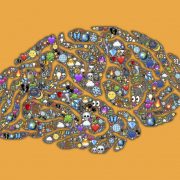Can “propricoceptive” training improve stability?
In the literature, the term “proprioception” is actually used quite largely. If it’s true that proprioception refers to one’s ability to recognize itself, it therefore has nothing to do with balance training. In the context of this study as in just about all of the other ones read, here, when we speak of proprioceptive training, we speak of training balance.
Why does this matter?
It matters because both proprioception and vestibular stimuli (balance) lead to brain stimulation that allows us to develop motor efficiency. They are complimentary.
Truth is, you simply don’t need to be in a state of relative instability to stimulate proprioception.
About this study
61 subjects were investigated, aged 65-85 years old. The subjects were divided into 3 groups. One group performed high-frequency proprioceptive training, one used the treadmill and there was no intervention performed for the third group.
Keep in mind that, in developed countries, falls are the leading cause of injury in adults over the age of 65 years old.
There are physiological gait changes that have been shown to be risk factors for falls, such as decreased stride length and speed, decreased single support time and increased stride width.
When walking, 80% of the time, you stand on one foot!
Of the three groups that were studied, only the one submitted to high-frequency proprioceptive (read balance) training showed significant gains in balance.
The assessment tool used was a rocking board with features of rolling and inclinations.
Discussion
What is particularly of interest here is that the subjects that walked on a treadmill did not improve their balance. It goes to show that, in some instances, simply working on a specific skill might not be enough to improve at it. Sometimes, deconstructing it as to improve on its constituents just might be more effective.
https://www.ncbi.nlm.nih.gov/pmc/articles/PMC6556312/










Leave a Reply